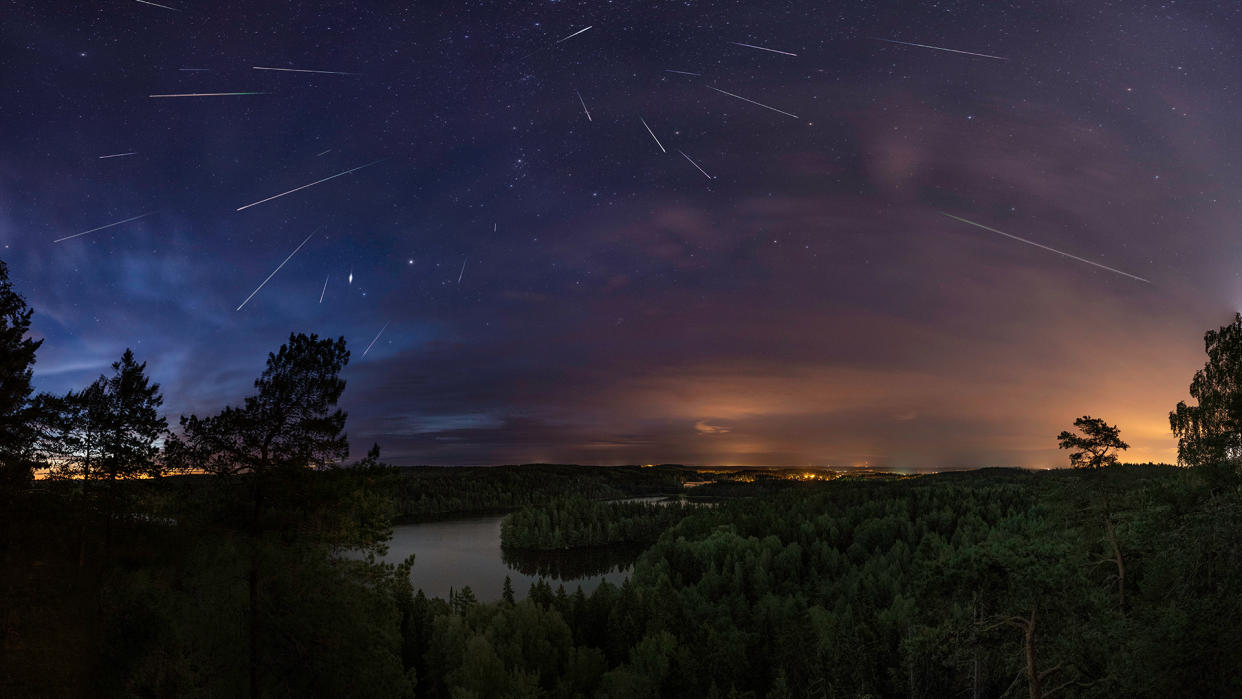Orionid meteor shower peaks this weekend: How to get the best views

The Orionid meteor shower will peak this weekend as Earth bursts through a field of dust and debris left in the inner solar system by Halley's comet.
Although the Orionids are active from Sept. 26 through Nov. 22, the best time to watch will be in the early hours of Saturday, Oct. 21, when around 23 "shooting stars" are expected per hour, according to the American Meteor Society. The precise peak is at 1 a.m. EDT (0500 GMT), with shooting stars from this medium-intensity shower striking Earth's atmosphere at a swift 41 miles per second (66 kilometers per second), or around 148,000 mph (238,000 km/h).
The Orionids, which NASA describes as one of the most beautiful meteor showers of the year, can appear anywhere in the sky. However, they will seem to originate close to Betelgeuse, a famous red giant star in the constellation Orion.
Shooting stars occur when meteors rub against air particles, creating friction and heat that vaporize the meteors to create bright streaks of light across the sky, according to Space.com.
With the moon close to its first-quarter phase, the darkest skies will be after midnight once the moon has set. That's ideal because the Orionids are best seen in the hours after midnight, according to NASA. More shooting stars will be visible in dark-sky locations, which you can identify using a light pollution map.
The Orionids are one of two annual meteor showers caused by Halley's comet, which was last seen in the inner solar system in 1986. The other is the Eta Aquarid meteor shower, which peaks each year in early May.
REATED STORIES
—10 dazzling photos of the Perseid meteor shower, 2023
—Enormous fireball meteor turns the sky over Turkey green in eerie viral video
—Scientists may have uncovered the oldest evidence of a meteor hitting Earth ever
Now beyond Neptune, Halley's comet orbits the sun roughly every 76 years, making it the only known naked-eye comet that can theoretically be seen twice in one human lifetime. Next, it will loop around the sun, passing close to Earth in 2061. This November and December, the giant comet will reach aphelion, its farthest point from the sun, before it begins its return trip to the inner solar system, according to EarthSky.

